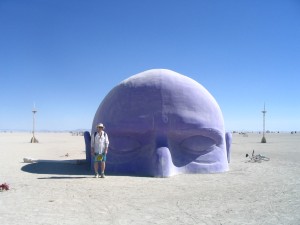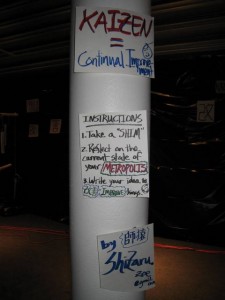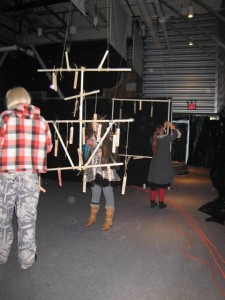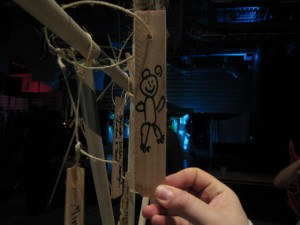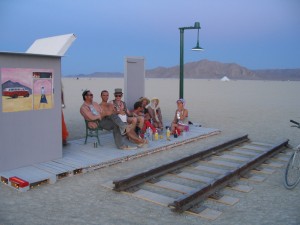Where I live, littering is not an uncommon act: a person will deliberately drop a bag of fast food waste onto the curb for someone else to clean up while a garbage can waits within 20 feet. Each day, the high-rise housing projects develop a small ring of debris along their buildings’ perimeters as a few residents drop trash from their windows (I’m not sure why: maybe their garbage chute/elevator doesn’t work, or residents are afraid to go into the hallway, or an alternative explanation that I am loathe to think about), which hard-hatted workers will clean up. The sidewalks are riddled with darkened pieces of gum and the occasional unmentionable.
Burning Man is a relief, if only for a few days. While volunteering with Media Mecca, I helped to sort and crush cans for recycling and picked up other moop (matter-out-of-place) during each shift. These daily clean-up efforts are especially important since the Burning Man event practices Leave-No-Trace (LNT). Since there is no garbage collection service, participants need to pack out their own garbage and belongings. In addition, the event site must be returned to a condition considered acceptable by the federal Bureau of Land Management, which manages the Nevada Black Rock Desert. As mentioned in a past post, Burning Man organizers are willing to use shame to get event participants to clean up.
After surveying the 2009 event site for moop, the Department of Public Works has put up a color-coded map. Green areas were deemed acceptable, yellow areas needed some work, and red areas were bad. Theme camps in the red and yellow areas will probably face social pressure to clean-up, or they may not be welcomed back.
Click on this photo to zoom in:

If New York City was mapped accordingly, areas of my neighborhood would probably be a deep, intense red.
